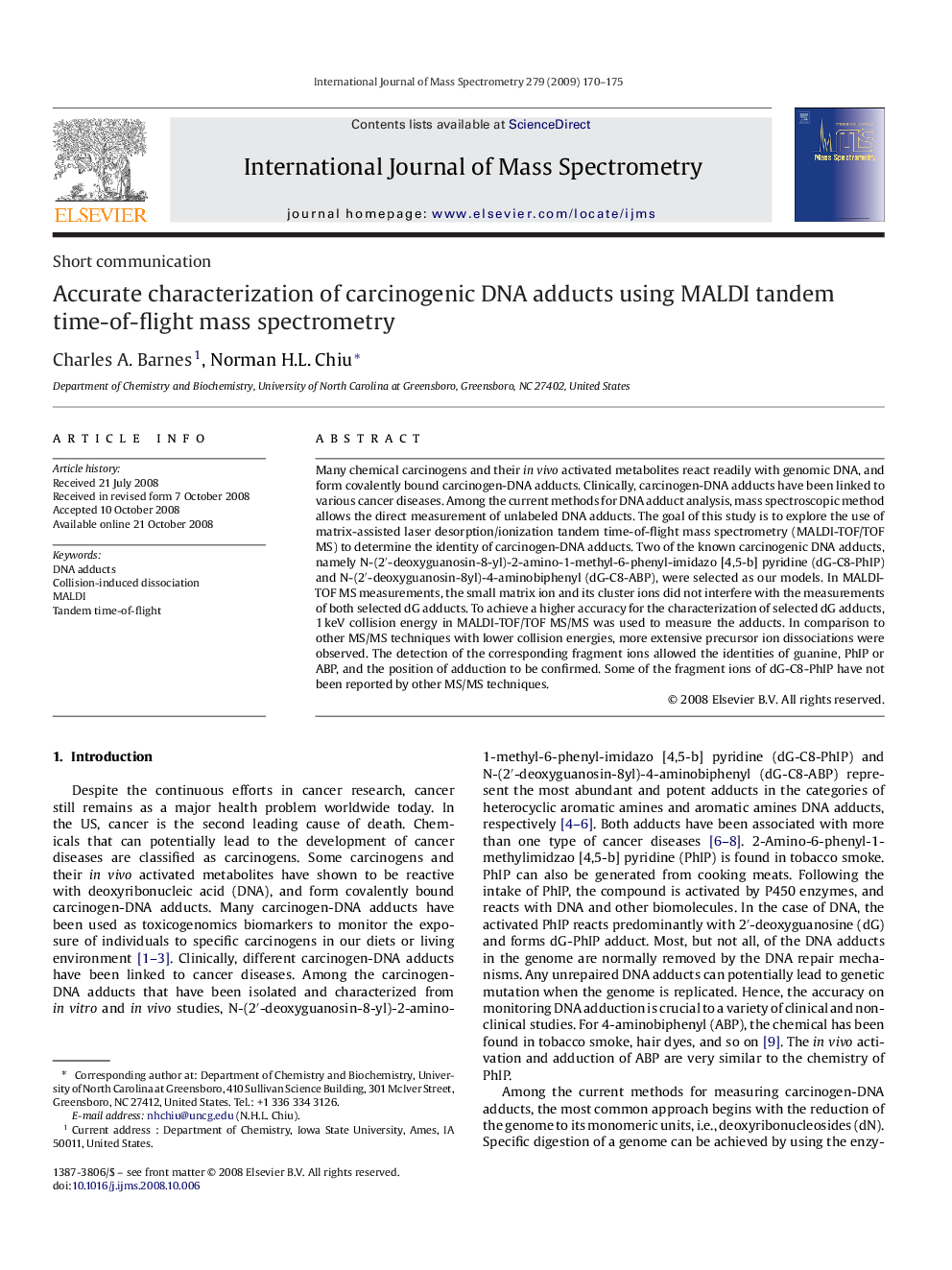| Article ID | Journal | Published Year | Pages | File Type |
|---|---|---|---|---|
| 1193743 | International Journal of Mass Spectrometry | 2009 | 6 Pages |
Many chemical carcinogens and their in vivo activated metabolites react readily with genomic DNA, and form covalently bound carcinogen-DNA adducts. Clinically, carcinogen-DNA adducts have been linked to various cancer diseases. Among the current methods for DNA adduct analysis, mass spectroscopic method allows the direct measurement of unlabeled DNA adducts. The goal of this study is to explore the use of matrix-assisted laser desorption/ionization tandem time-of-flight mass spectrometry (MALDI-TOF/TOF MS) to determine the identity of carcinogen-DNA adducts. Two of the known carcinogenic DNA adducts, namely N-(2′-deoxyguanosin-8-yl)-2-amino-1-methyl-6-phenyl-imidazo [4,5-b] pyridine (dG-C8-PhIP) and N-(2′-deoxyguanosin-8yl)-4-aminobiphenyl (dG-C8-ABP), were selected as our models. In MALDI-TOF MS measurements, the small matrix ion and its cluster ions did not interfere with the measurements of both selected dG adducts. To achieve a higher accuracy for the characterization of selected dG adducts, 1 keV collision energy in MALDI-TOF/TOF MS/MS was used to measure the adducts. In comparison to other MS/MS techniques with lower collision energies, more extensive precursor ion dissociations were observed. The detection of the corresponding fragment ions allowed the identities of guanine, PhIP or ABP, and the position of adduction to be confirmed. Some of the fragment ions of dG-C8-PhIP have not been reported by other MS/MS techniques.
